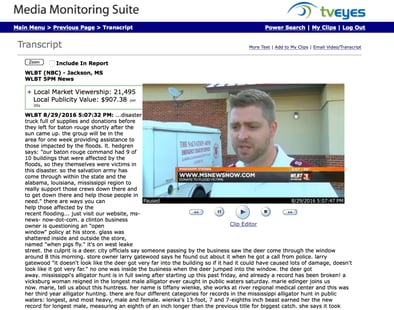If you’re the public information officer for police, fire departments, government agencies or officials, there’s a good chance your days don’t have a consistent routine. As the “go-to” resource for the organization, you must keep the media and public informed with accurate, up-to-date details about the latest emergency or crisis.
In addition, cultivating strong relationships with the community and advocating for public support of your department or agency is a core objective of your role. This is often a complex, challenging and time-consuming task because it involves everything from developing communications campaigns to proactively pitching journalists. It also means you just can’t afford to miss anything the media says about your organization. So even on a “normal” day, you’ll be pressed for time.
Some PIOs stitch together a manual method for tracking news. But without a service, broadcast can be especially challenging to research, capture and archive relevant segments. What’s more, with this approach, you run the risk of possibly missing an important piece – or learning about it after it’s too late.
A broadcast medi a monitoring tool not only alleviates these concerns and eliminates unnecessary work, but it’s also an invaluable resource for every communication activity, from planning a press conference to training spokespeople. Our free playbook examines seven ways PIOs can use broadcast media monitoring as part of their daily routine.
a monitoring tool not only alleviates these concerns and eliminates unnecessary work, but it’s also an invaluable resource for every communication activity, from planning a press conference to training spokespeople. Our free playbook examines seven ways PIOs can use broadcast media monitoring as part of their daily routine.
Download the playbook to understand how broadcast media monitoring can help you:
- Monitor breaking news
- Deal more effectively with emergencies and crises
- Strengthen community relationships
- Conduct media training for spokespeople
- Organize press conferences
- Develop more effective advocacy efforts
- Internally share and analyze coverage to fine tune communications
Download today and discover how broadcast media monitoring can help your public information office build stronger community relationships and simplify your day.




